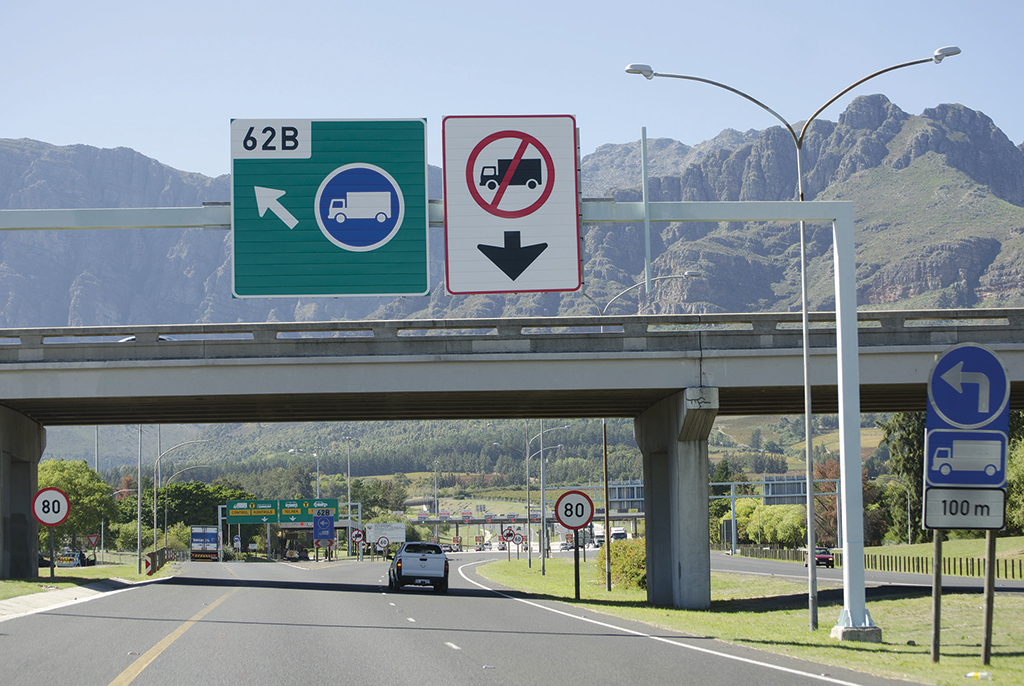
Round-about routes
Since 18 March 1988, the Huguenot Tunnel has provided a safer, faster and shorter route between Paarl and Worcester, cutting around 20 minutes and 11km from the journey over the mountain via the old Du Toitskloof Pass. When upgrades to the Huguenot Tunnel begin, motorists have several options available to them when travelling between Paarl and Worcester:
- Take the R101/DuToitskloof Pass to and from Touws River (+ 15 minutes)
- Go via Villiersdorp/Stellenbosch to and from Touws River (+50-55 minutes)
- Go via Grabouw/Somerset West to and from Touws River (50 – 55 minutes)
- Go via Ceres/Tulbagh/Wellington (+45 minutes)
- Go via Grabouw/Somerset West (+ 50 – 55 minutes).
When construction begins, real-time information on closure times will be available via www.i-traffic.co.za and the SANRAL website: www.nra.co.za. This way motorists can plan their journey’s safely and accurately, in order to minimise the hassle of finding an alternative route.
Italian flare, EU safety
Safety is one of the primary motivations behind the Huguenot Tunnel refurbishment and upgrade project. It is an impressive achievement that, during the tunnel’s 31-year history, only two major fires have been recorded, translating to 0.053 fires per million heavy vehicles kilometre. This is below the World Road Association’s recommendation of 0.400. But maintaining this track record requires investment and a world-class approach to safety.

n pursuit of this goal, in November 2013 a SANRAL-appointed professional team produced a risk analysis report on the Huguenot Tunnel with the aim of ensuring that the tunnel was operating according to internationallyaccepted standards. The report noted that the south bore single carriageway, dual-lane facility was operating at or beyond its current capacity and that unidirectional tunnels were generally regarded as being a much safer option. Using European criteria for acceptable levels of risk around considerations like flammable cargoes, and by interrogating the standards in force in five European countries (Austria, the Netherlands, the Czech Republic, Italy and the United Kingdom), the report determined that Italy’s standards were most applicable
to the Huguenot Tunnel, because:
- Italian tunnels are generally mountain tunnels, as is the Huguenot Tunnel
- The Italian criteria were largely influenced by the Mont Blanc accident in 1999 and subsequent improvements, which have influenced tunnel safety across Europe
- The Italian criteria provide some flexibility and balance between the costs of upgrading and the safety of users.
- The Huguenot Tunnel was constructed between 1984 and 1988. The value of the project back then was R125 million.
- Geological surveys and design started in 1973, and excavation followed in 1984.
- The construction teams tunnelled from both ends using drilling and blasting. In 1986, the two drilling heads met with an error of only 3mm over its entire 3.9km length.
- Rock was excavated and used for fill on the western approach road and as concrete aggregate for the tunnel lining.
- About 200 labourers, 50 artisans and 15 managerial staff were directly employed during the construction period. Some 35 consultants contributed to the project and the project was completed by seven main contractors, 121 subcontractors and 810 suppliers.
- In total, 10 million workhours were required to create the Huguenot Tunnel.
- The south bore of the Huguenot Tunnel opened on 18 March 1988. It’s been in operation ever since.
- The tunnel eliminates the need to climb 500m over the 23km long Du Toitskloof Pass.
- By cutting 11km from the mountain pass route, the tunnel saves the country fuel to the order of 4.5 million barrels of crude oil at year.
- Inside the tunnel, lighting takes the form of a continuous strip. This avoids flickers and allows the human eye to adapt to the conditions.
- The lights usually operate at 60% of normal, to save the lamps and for energy saving.
- There are 36 cameras in the tunnel forming the video-based traffic-monitoring system.
- Within the tunnel are speed detection systems, a fire and evacuation PA and public address systems.
Lessons from the Mont Blanc tunnel fire
On 24 March 1999 a deadly fire in the 11.6km Mont Blanc tunnel, which links France and Italy, resulted in the deaths of 39 people. The Alpine tunnel, which cuts through the tallest mountain in western Europe, underwent three years of renovations following the deadly fire, which included the installation of computerised detection equipment, extra security bays and an escape shaft, according to Deutsche Welle. The German news agency reported in 2005 that a technical report into the fire determined that the nearest smoke detector to the blaze was out of order and the radio frequencies in the tunnel were not working properly. As a result, when the truck broke down half-way through the tunnel, the resultant fire quickly spread to the traffic behind. The blaze raged for more than two days. The Mont Blanc disaster ultimately saw 10 regulations published in Europe around tunnel safety and minimum requirements agreed which today apply across Europe.